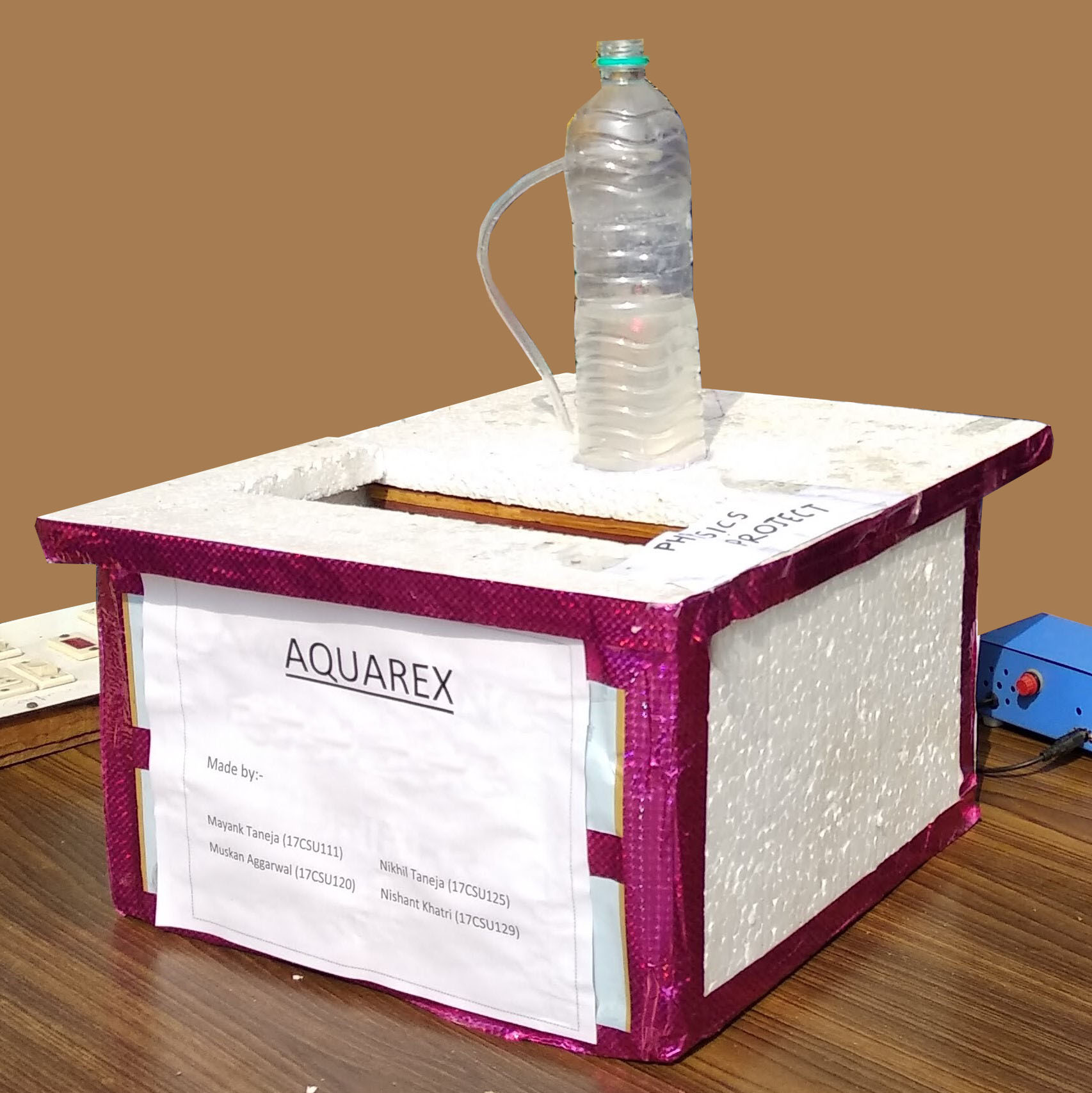Aquarex
Bending of light using water
A cool science experiment using laser. All our school life we have been taught that light travels in staright line. Well here is a cool experiment that proves that light can also bend or so you can make people think.

Requirements
For this experiement you will need:
- An empty water bottle
- Water
- Pointed object
- ALaser light
- A bowl
- Cardboard box
- And a water pump (optional)
- Battery (optional)
Procedure
- Take the empty water bottle and punch a hole on the surface of water bottle.
- Make sure that the hole is made in or around mid way of the bottle.
- Put the bottle in the bowl and fill the bottle with water.
- Put everything inside the cardboard box to keep environment dark
- You will notice that water will start flowing out off the bottle through the whole.
- Now using the laser project the bean horizontally from the other side of the bottle.
- Notice that the laser bean follows the laminar flow of the water stream and the beam crashes down along with the water into the bowl.
- Optionally you can connect pump to keep refilling water from bowl back into the bottle.
Experimentation
First things first.
In this experiment technically the light does not bend.
Observe the laminar flow of the water stream coming out of the bottle, when the water is in laminar flow the water stream acts just like a fiber optics and carries the light. When the light beam hits the water stream the laser light gets reflected insde the stream.
Remember the surface of water is reflective both on its surface and below the surface. This underside reflection of water is usually seen in darkly lit environments like inside a cardboard box. When light leaves a denser material in the case water, due to the change in speed it will change directions how ever when a certain angle called the critical is reached it reflects back. The cirtical angle is the smalled angle of incidence for which light is totally reflected.
Total internal reflection is a phenomeanon that happens when a propagating wave strikes a medium boundary at an angle larger than a particular critical angle with respect to the normal to the surface. The critical angle of water is 48.8 degrees. When the angle of the beam crosses the critical angle the light does not go out of the stream and total internal reflection takes place.
At the end of the stream, there is a lot of turbulance so the continuous reflection chain breaks or scatter down and the laser light gets scattered because of this phenomeanon of total internal reflection light appears to be travelling along with the water stream.